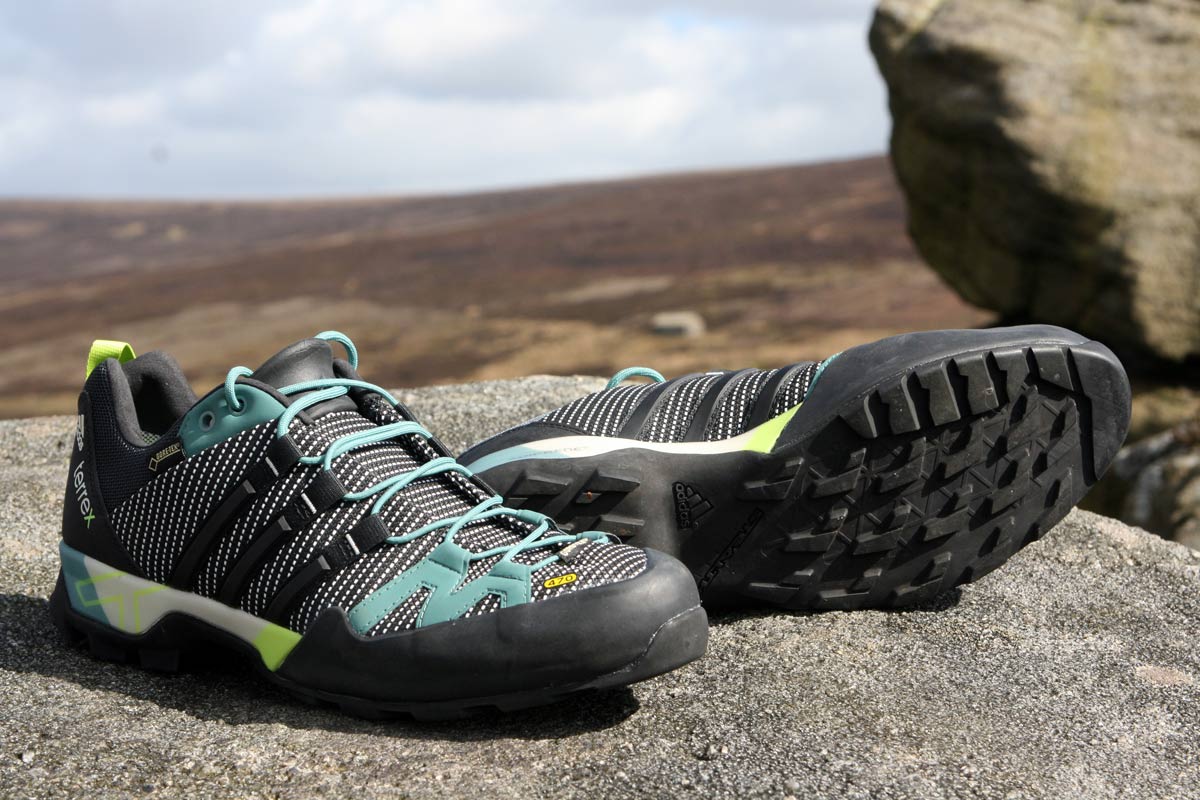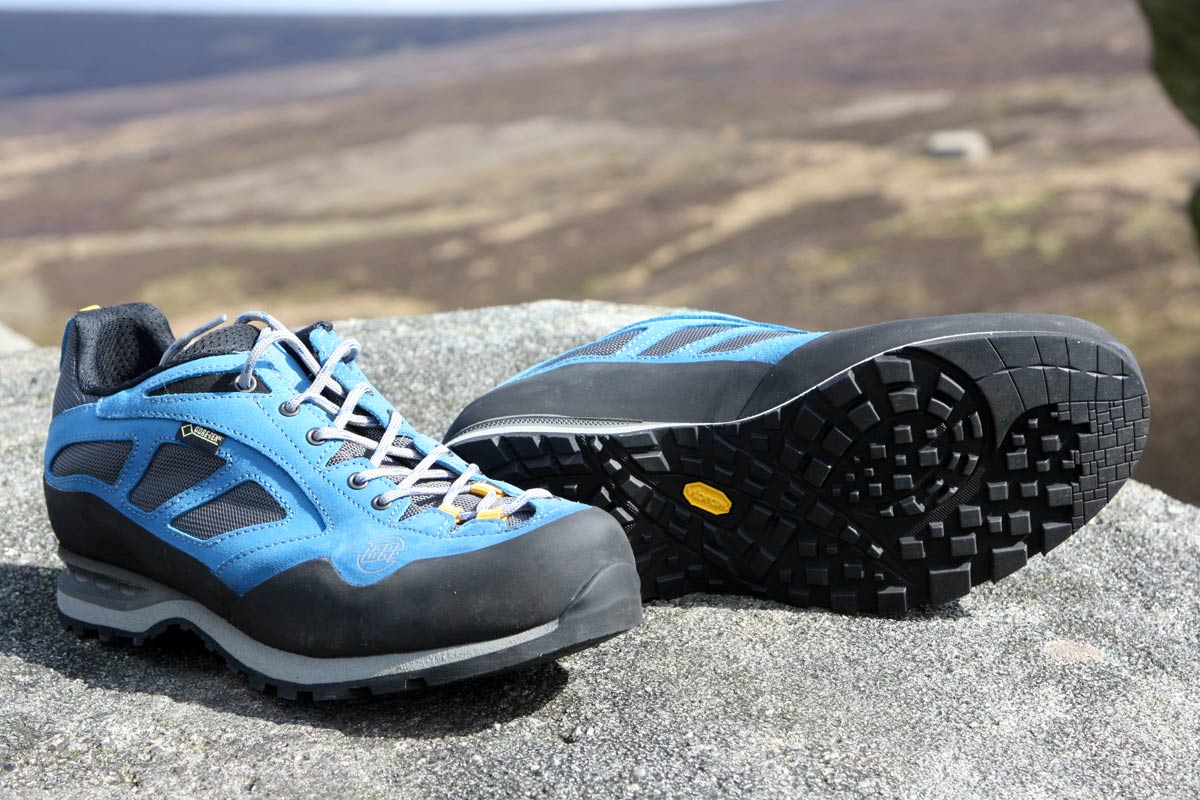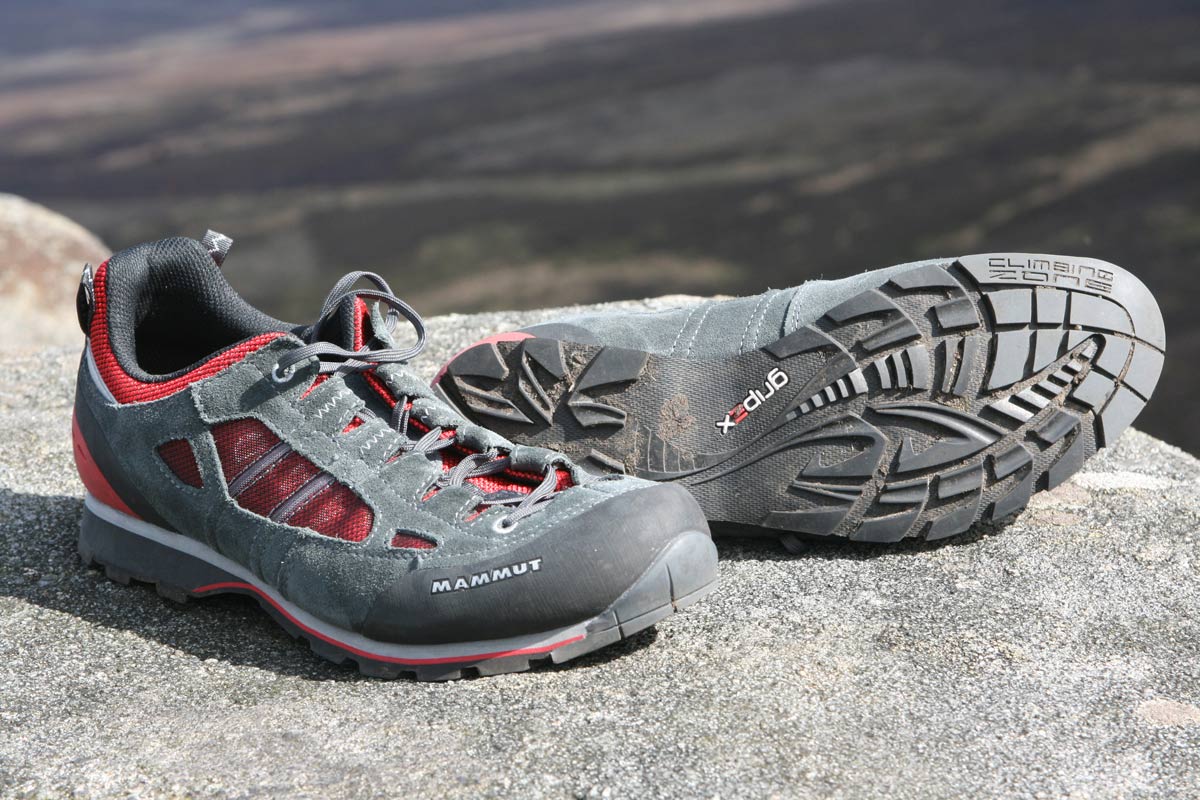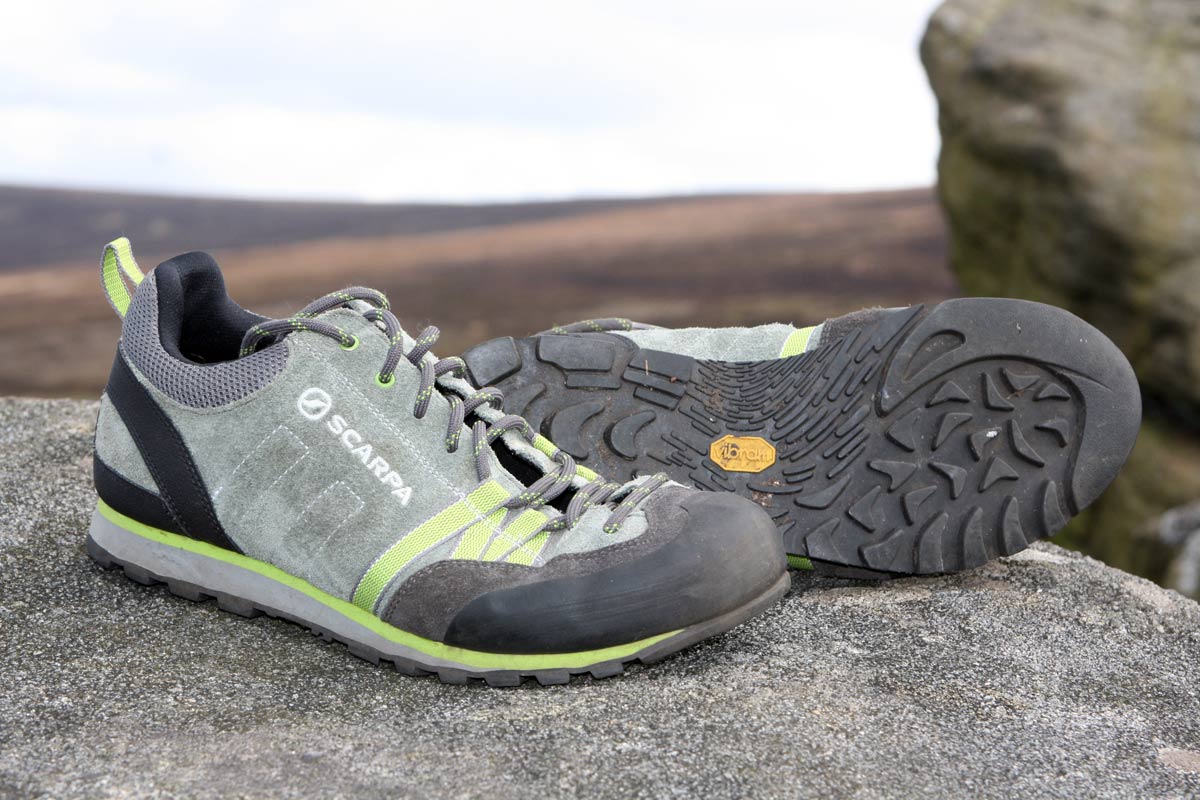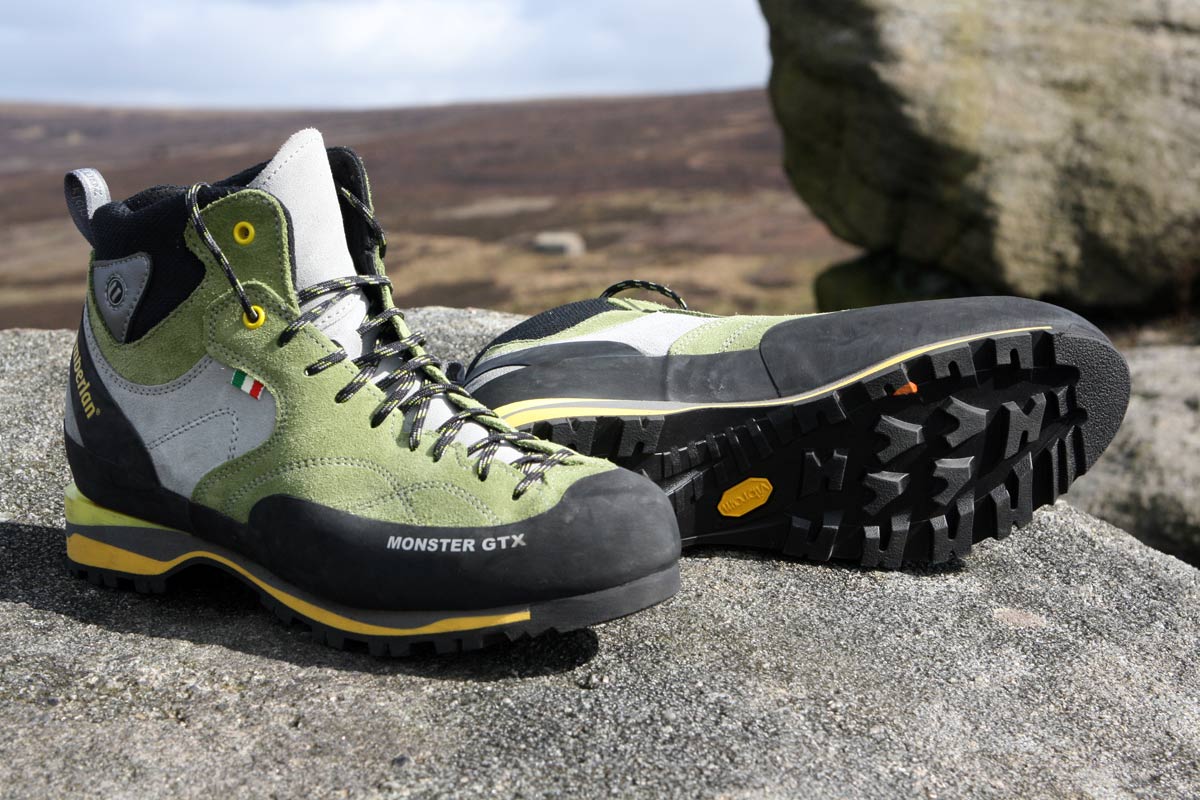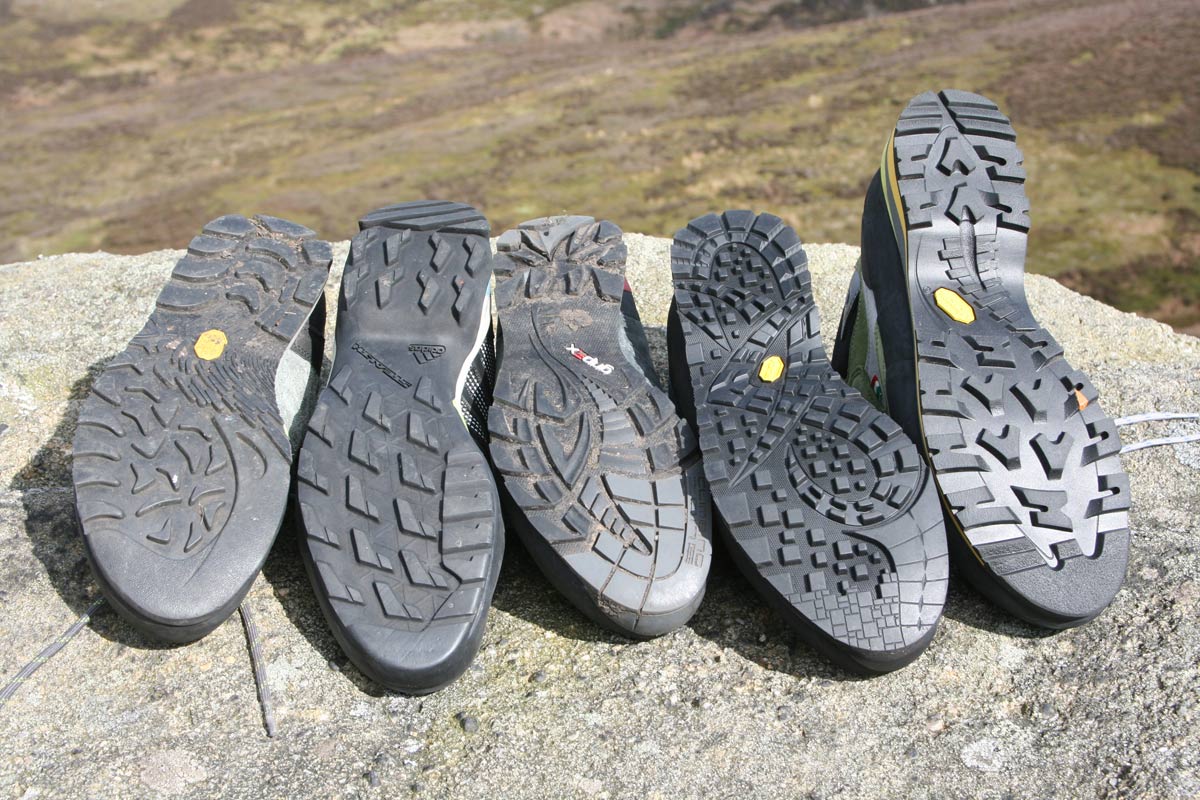Scrambling’s a peculiarly British activity – not walking, but yet not quite climbing either. Or maybe easy climbing. But generally on mountains, with a bit of a walk-in to reach it. Which means that on paper, the best scrambling shoe or boot is an odd platypus for sure.
Looking for the latest scrambling and approach shoe options? Head over to our round up of the best approach shoes for 2019.
It needs to have enough comfort for a longish mountain walk, possibly covering some soft ground, be grippy enough to give traction on slippery and non-slippery rock, but not wear out ridiculously fast, and ideally – on harder grade two and three scrambles at least – have enough stiffness to stand easily on smaller holds without either flexing or rolling off.
Of course you can scramble in ordinary walking boots, but they tend to be flexible underfoot and not always very grippy. Or you can use stiff-soled mountaineering or alpine boots, but they tend to be clumpy and imprecise – am I on the hold or not?
The Contenders
Which leaves us with a select bunch of ‘neither fish nor fowl’ shoes and boots like the five we’ve tested here from five of the top brands.
adidas| Hanwag | Mammut | Scarpa | Zamberlan | Advice on sticky rubber | Addvice on scrambling soles


